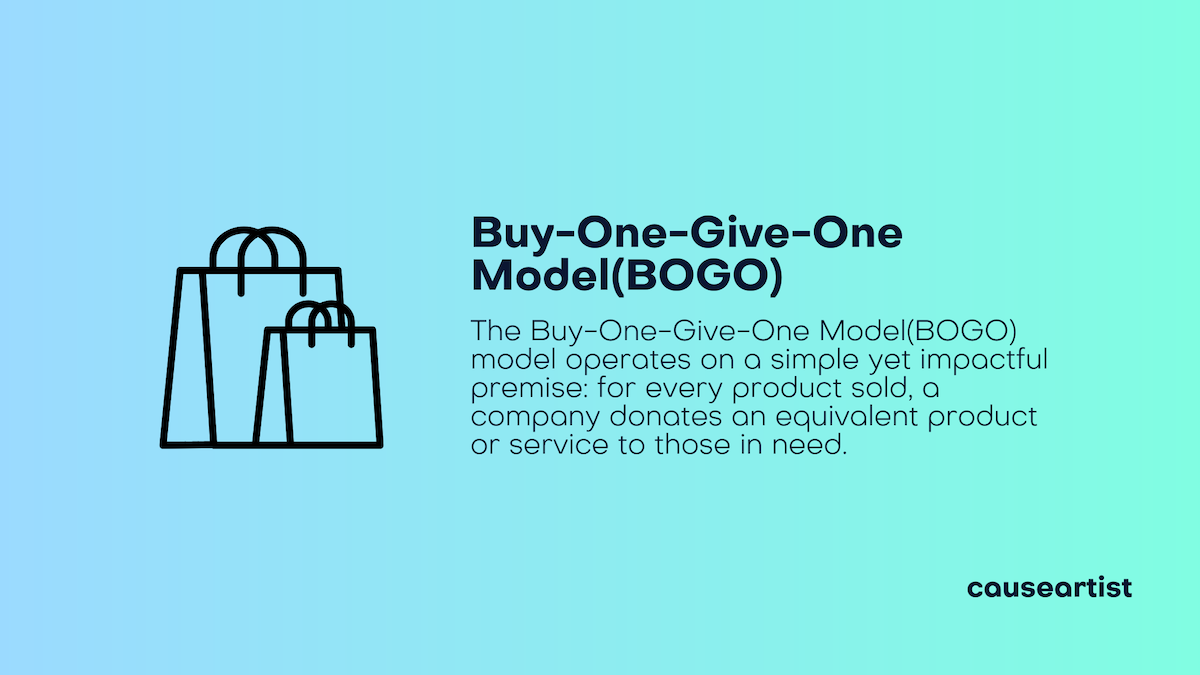The Buy-One-Give-One Model(BOGO) model operates on a simple yet impactful premise: for every product sold, a company donates an equivalent product or service to those in need.
Brands like TOMS and Warby Parker have become synonymous with this approach, turning consumer spending into a vehicle for social good.
But is this model all it’s cracked up to be?
Let’s explore the benefits and drawbacks.
The Pros of the Buy-One-Give-One Model
1. Builds Consumer Loyalty
The BOGO model fosters strong emotional connections between brands and consumers. Shoppers are more likely to support a brand when they feel their purchase contributes to a meaningful cause.
2. Drives Brand Differentiation
In crowded markets, standing out is crucial. Companies that adopt this model distinguish themselves as purpose-driven, appealing to ethically conscious consumers.
3. Creates Social Impact
The direct donation aspect makes an immediate difference in underserved communities. For example, every pair of shoes TOMS sells translates into a pair donated to a child in need.
4. Encourages Word-of-Mouth Marketing
Socially conscious initiatives inspire customers to share their experiences, creating organic buzz and enhancing brand visibility.
5. Boosts Employee Engagement
Employees often feel more motivated and proud to work for companies that integrate social responsibility into their mission.

The Cons of the Buy-One-Give-One Model
1. High Operational Costs
Donating an equivalent product or service can strain a company’s finances, particularly for small or emerging businesses. Ensuring quality while maintaining profitability requires careful planning.
2. Challenges in Scalability
Reaching remote or underserved areas often involves complex logistics, making it difficult to maintain consistency as a business grows.
3. Risks of Dependency
While donations provide short-term relief, they can inadvertently create reliance in recipient communities. Critics argue this model may lack the sustainability needed for long-term impact.
4. Limited Product Applicability
Not all products or services align with the BOGO model. For instance, donating some items (like luxury goods) may not resonate with consumers or beneficiaries.
5. Potential for Mismanagement
Without proper oversight, donations can be misallocated, diminishing the intended impact and eroding consumer trust.
Balancing the Pros and Cons
To make the most of the Buy-One-Give-One model, businesses must address its challenges proactively. Here are some strategies for balancing the pros and cons:
- Focus on Transparency: Clearly communicate how donations are distributed to build trust with consumers.
- Partner Strategically: Collaborate with nonprofits and organizations experienced in delivering aid effectively.
- Ensure Sustainability: Combine donations with initiatives that empower recipients, such as education or vocational training programs.
- Adapt to Feedback: Regularly assess the program’s effectiveness and make improvements where needed.
Examples Where BOGO Has Faced Challenges:
TOMS Shoes:
Issue: TOMS' model of donating a pair of shoes for each pair sold faced criticism for potentially disrupting local economies. By providing free shoes, local shoemakers and vendors in recipient communities experienced reduced demand, which could harm their livelihoods.
Cora:
Issue: Cora, an organic tampon company, follows a "buy one, give one" model by gifting disposable pads to women in developing countries with every purchase. Critics argue that this approach may not consider the cultural and environmental implications of introducing disposable products to areas without proper waste management systems.
Examples Where BOGO Has Been Successful:
Love Your Melon:
Success: This apparel brand donates 50% of its net profits to nonprofit partners fighting pediatric cancer. Their model has been praised for its transparency and significant contributions to cancer research and support.
WakaWaka:
Success: WakaWaka developed solar-powered products and, for each purchase, donated a solar light to families without electricity. Their approach addressed energy poverty and was recognized for its positive impact in disaster-stricken areas.
Yoobi:
Success: Yoobi sells school supplies and, for every item purchased, donates an item to a classroom in need within the U.S. Their model has effectively supported education by providing essential supplies to underfunded schools.
Conclusion
The Buy-One-Give-One model is a powerful tool for aligning business with social good. Its ability to create positive change while driving brand growth makes it an attractive choice for many companies.
However, success requires balancing its benefits with careful management of its challenges. With thoughtful execution, the BOGO model can pave the way for a more equitable and socially responsible business landscape.







